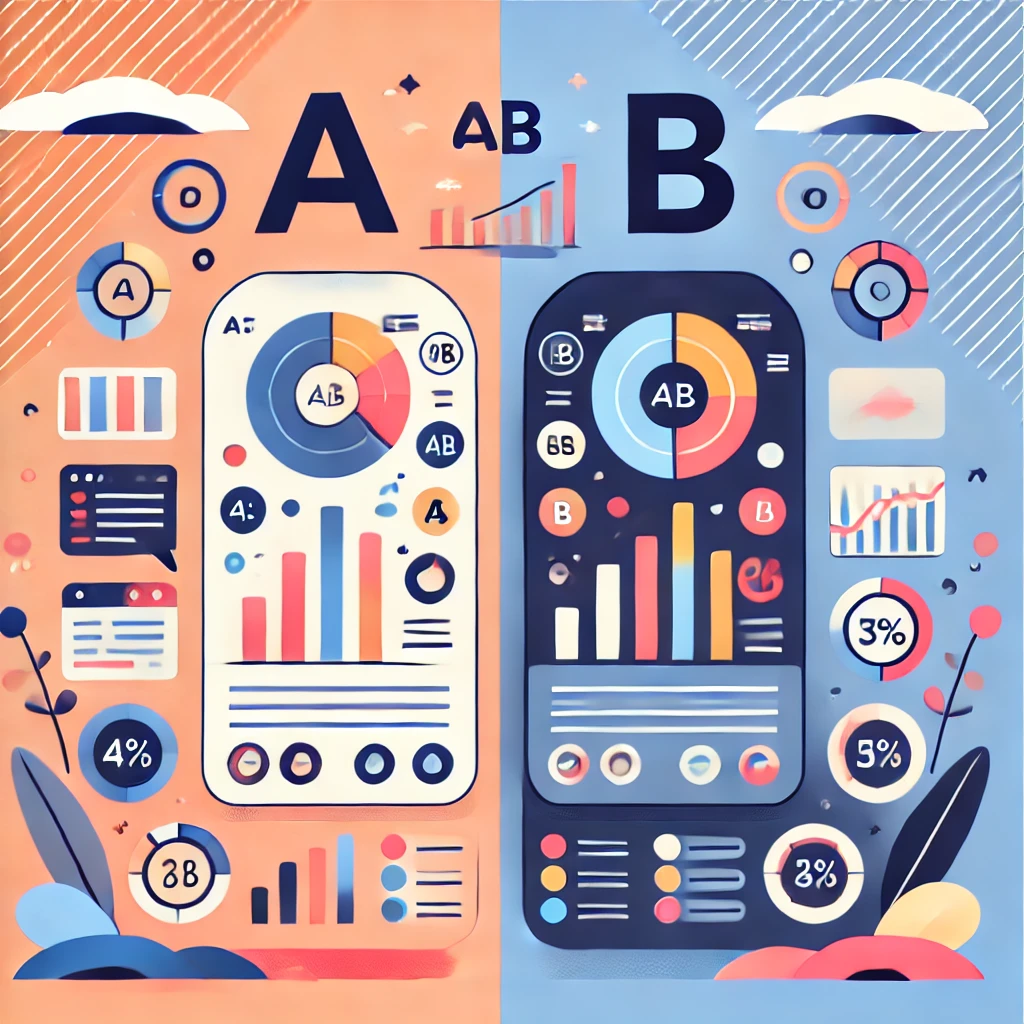A/B testing, also known as split testing, is a crucial method for optimizing social media marketing strategies. By comparing two versions of a piece of content or a campaign to determine which one performs better, marketers can make data-driven decisions that improve engagement, increase conversions, and enhance overall marketing effectiveness. This process involves creating two variants (A and B) of a single variable - such as a social media post, ad, or landing page - and measuring their performance against key metrics.
This blog post will explore the role of A/B testing in social media marketing, including its benefits, how to conduct effective tests, and common pitfalls to avoid.
Why A/B Testing Matters in Social Media Marketing
Data-Driven Decision Making
A/B testing empowers marketers to make decisions based on hard data rather than guesswork. By systematically testing different elements of a campaign—such as headlines, images, or call-to-actions—marketers can identify what resonates most with their audience. This approach leads to more informed decisions that are grounded in evidence, resulting in more effective marketing strategies.
Improved Engagement and Conversion Rates
One of the primary goals of social media marketing is to engage users and convert them into customers or followers. A/B testing allows marketers to refine their content to maximize engagement. For example, by testing different headlines or image choices, you can discover which version drives more clicks, likes, shares, or comments. This continuous optimization process helps to improve conversion rates over time.

Cost-Effective Optimization
A/B testing can help you achieve better results without significantly increasing your budget. By identifying and implementing the most effective strategies, you can allocate your resources more efficiently. For instance, by testing two different ad formats, you can determine which one generates the highest return on investment (ROI), allowing you to focus your budget on the most successful version.
How to Conduct Effective A/B Tests
Define Your Objective
Before you begin A/B testing, it's essential to define what you want to achieve. Are you looking to increase click-through rates, improve engagement, or boost conversions? Having a clear objective will guide the test design and help you measure success accurately.
Identify the Variable to Test
Choose one specific element to test at a time. This could be the text of a post, the image used, the placement of a call-to-action, or even the time of day the content is posted. Testing multiple variables simultaneously can lead to inconclusive results, making it difficult to determine which element influenced the outcome.
Create Two Variants
Develop two versions of the content or campaign, changing only the element you want to test. For example, if you're testing a headline, both versions should have the same image, call-to-action, and other elements, with only the headline differing. This approach ensures that any differences in performance can be attributed to the variable being tested.

Run the Test Simultaneously
To ensure accurate results, run both versions of your test simultaneously. This step is crucial for eliminating external factors—such as time of day or day of the week—that could influence the outcome. If you're testing on social media, make sure that both versions are shown to similar audience segments to maintain consistency.
Analyze the Results
Once the test has concluded, analyze the data to determine which version performed better. Look at key metrics such as engagement rates, click-through rates, and conversions. If the results are statistically significant, you can confidently implement the winning version. If not, consider running additional tests or exploring other variables.
Implement and Iterate
After identifying the most effective variant, implement it in your broader social media strategy. However, the process doesn't end here. A/B testing should be an ongoing effort, with continuous testing and iteration to keep improving your campaigns over time.
Common Pitfalls to Avoid
Testing Too Many Variables at Once
Testing multiple variables simultaneously can lead to ambiguous results. Stick to one variable per test to ensure clarity in your findings.
Inadequate Sample Size
A small sample size can lead to misleading results. Ensure your test reaches enough people to provide statistically significant data. This is particularly important in social media, where audience sizes can vary widely.

Ignoring External Factors
External factors such as seasonality, current events, or changes in social media algorithms can impact test results. Be mindful of these factors when designing and analyzing your tests.
Conclusion
A/B testing is a powerful tool in social media marketing, offering a methodical approach to optimizing content and campaigns. By making data-driven decisions, improving engagement, and maximizing ROI, A/B testing helps marketers fine-tune their strategies for better performance. As social media continues to evolve, regular A/B testing should be a cornerstone of any marketing strategy, ensuring that your content remains effective and relevant in a dynamic digital landscape.



